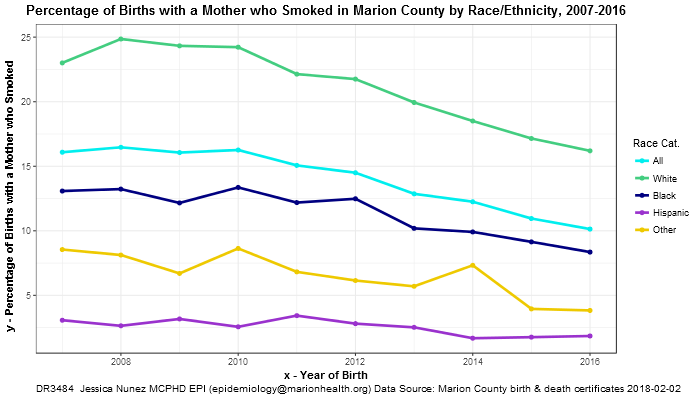The Consumption and Consequences of Alcohol, Tobacco, and Drugs in Indiana: A State Epidemiological Profile: 2018Substance use continues to be a major public health concern, negatively impacting a variety of health, legal, and social outcomes. Nearly one-fourth of Hoosiers ages 12 and older engaged in binge drinking in the past month and one-tenth used an illicit substance. Furthermore, 7% of Indiana residents met criteria for substance use disorder (SUD) in the past year and 6.5% needed but did not receive treatment for their SUD.
Of particular concern is polysubstance use, or the use of two or more substances over a defined period, simultaneously or at differing times, for recreational purposes. In over 70% of admissions to substance use treatment in Indiana, the use of multiple substances was indicated, with 30% reporting the use of two drugs and nearly 41% reporting the use of three drugs.
During state fiscal year 2018, a total of 10,483 children were removed from their parents by the Department of Child Services in Indiana; almost two-thirds (64%) of these removals were due to parental alcohol and/or drug use.
 Adolescent Pregnancy Rate by Race_Ethnicity (Marion County, 2012-2017)
Adolescent Pregnancy Rate by Race_Ethnicity (Marion County, 2012-2017) The adolescent pregnancy rate has decreased from 2012 to 2017 in Marion County. Hispanic teens have the highest rates, followed by Black non-Hispanic female teens. From 2016 to 2017, the adolescent pregnancy rate decreased for all races, but increased for Hispanic adolescents (DR3841).
 Maternal Smoking Rates in Marion County by Race/Ethnicity, 2007-2016
Maternal Smoking Rates in Marion County by Race/Ethnicity, 2007-2016This graph shows the percentage of mothers who smoked during pregnancy by race/ethnicity from 2007-2016. During this period, white residents had the highest prevalence of maternal smoking, followed by black residents. Maternal smoking steadily declined during this period, DR3484.